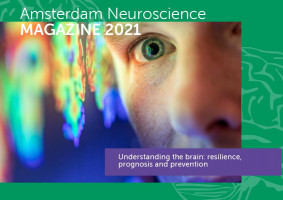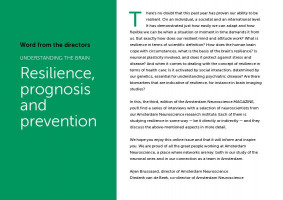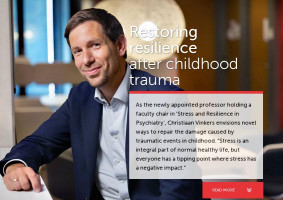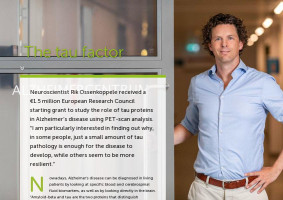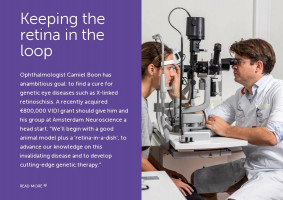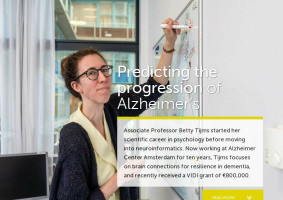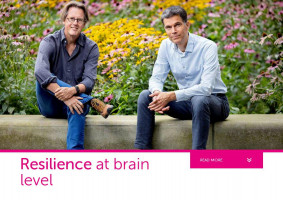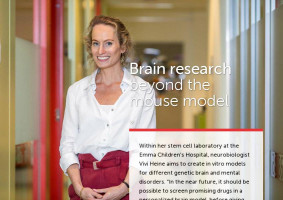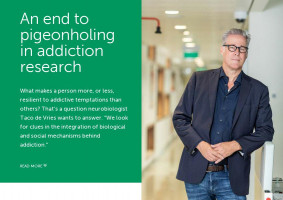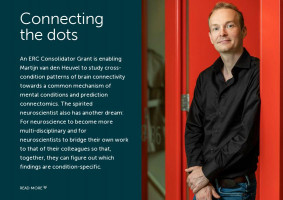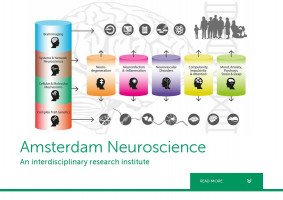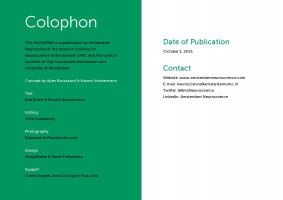With its doctors having to be available for the operating table 24/7, the department of Neurosurgery may not seem the easiest environment for thorough scientific research. But, according to clinical epidemiologist Dagmar Verbaan, who successfully led a large, multi-center trial on subarachnoid hemorrhages, “good cooperation between all the available disciplines within and between the departments creates better scientific resilience.”
In the Netherlands, approximately 1,500 patients come to hospital each year with a subarachnoid hemorrhage. “With a total of around 40,000 strokes per year in the Netherlands, this makes subarachnoid hemorrhage a relatively rare disease in its category,” says Dagmar Verbaan, Associate Professor Evidence-based Neurosurgery. “The prognosis of this disease, however, is relatively grim. About half of the patients die, while many others suffer invalidating effects for the rest of their life. Moreover, many patients are relatively young: between 40 and 60 years old.”
A subarachnoid hemorrhage is caused by a ruptured brain aneurysm, right above the actual brain tissue. The bleeding creates high pressure on the brain, which is directly fatal in up to 20% of patients. In the remaining patients, the bleeding stops spontaneously, but re-rupture, which occurs in the first few hours, is a serious threat, necessitating rapid intervention to obliterate the aneurysm. “Intervention can be carried out by a neurosurgeon opening the skull and clipping the ruptured aneurysm, or by an intervention radiologist, who places a small, detachable coil inside the ruptured aneurysm to strengthen the weak spot from within,” Verbaan explains. “To prevent the aneurysm from rupturing again, tranexamic acid, or TXA, a medicine that helps the blood to clot, can be given. TXA is often prescribed to patients who have a risk of excessive bleeding in general.”
ULTRA-early treatment
When Verbaan was appointed at Amsterdam UMC almost ten years ago, she was specifically assigned to establish a fertile culture for scientific research projects. “The treatment of subarachnoid hemorrhage patients with TXA was a good first case to take on,” she remembers. “International studies showed us that administrating this drug for too long could have serious side-effects, including ischemic stroke. A Swedish study had already suggested that short-term administering of this drug might be better. So, as a first practical project, we decided to study this ‘Swedish approach’, in an ultra-short and ultra-early approach. Therefore, we called our multi-centered and randomized controlled study the ULTRA-study.”
Time is brain
“A complicating factor in a trial like this was the urgent nature of the treatment,” continues Verbaan. “Most patients are not necessarily taken to the hospitals where the appropriate surgical interventions can be carried out. So, by the time a patient arrives in one of the few hospitals that do offer this care, there’s no time to waste. As my colleagues at the operating table often say: ‘Time is brain’. The longer you wait, the more damage there will be to the brain.”
This time pressure meant that Verbaan and her colleagues had to take a different approach in getting the necessary informed consent of those patients being enrolled in the study. “With TXA being an established drug, it was possible to first randomize the patients to either TXA or no additional treatment, and to obtain their consent afterwards. Only very few, less than 4% of the patients, stated afterwards they did not wish to participate in scientific research. Their data was, of course, then destroyed.”
No added value
Almost 1,000 patients who were enrolled in the study painted a sobering picture: there was no added value in giving patients TXA, not in terms of rebleeding after surgical intervention and not in clinical outcomes six months after being brought to the hospital. “We even saw a very small tendency towards a better outcome for patients who did not receive TXA,” says Verbaan. To her, the results of this ULTRA-study can only mean one thing: “Unlike in the United States, for example, TXA is not yet routinely given to subarachnoid hemorrhage patients in the Netherlands. From the ULTRA-study we must conclude that giving TXA to these patients could even be stopped all together.”
Scientific resilience at Amsterdam Neuroscience
From the ULTRA-study a second and more positive conclusion could also be drawn, Verbaan emphasizes. “This study shows that when the infrastructure for thorough scientific research is well organized, and when all disciplines within and between departments work well together, a lot of valuable information can be extracted from existing and freshly collected data. Efficient cooperation and thorough registration create scientific resilience, so to speak.”
After ULTRA
With the ULTRA-study closed and finished, there are already several new studies in place. “We are, for example, looking into the value of the drug Nadroparine in patients with subarachnoid hemorrhage,” says Verbaan. “The main objective of these studies is, of course, to improve the clinical outcome for our patients. The ULTRA-study showed that it can also be about avoiding unnecessary care. Soon, we will be using artificial intelligence to determine the optimal care for our patients; we are already using algorithms in our patient data to detect previously unknown patterns. We hope that through this artificial intelligence we can, for example, learn which patients are at a higher risk of developing complications and which can be dismissed from hospital at an earlier stage.”
Photography: Digidaan
